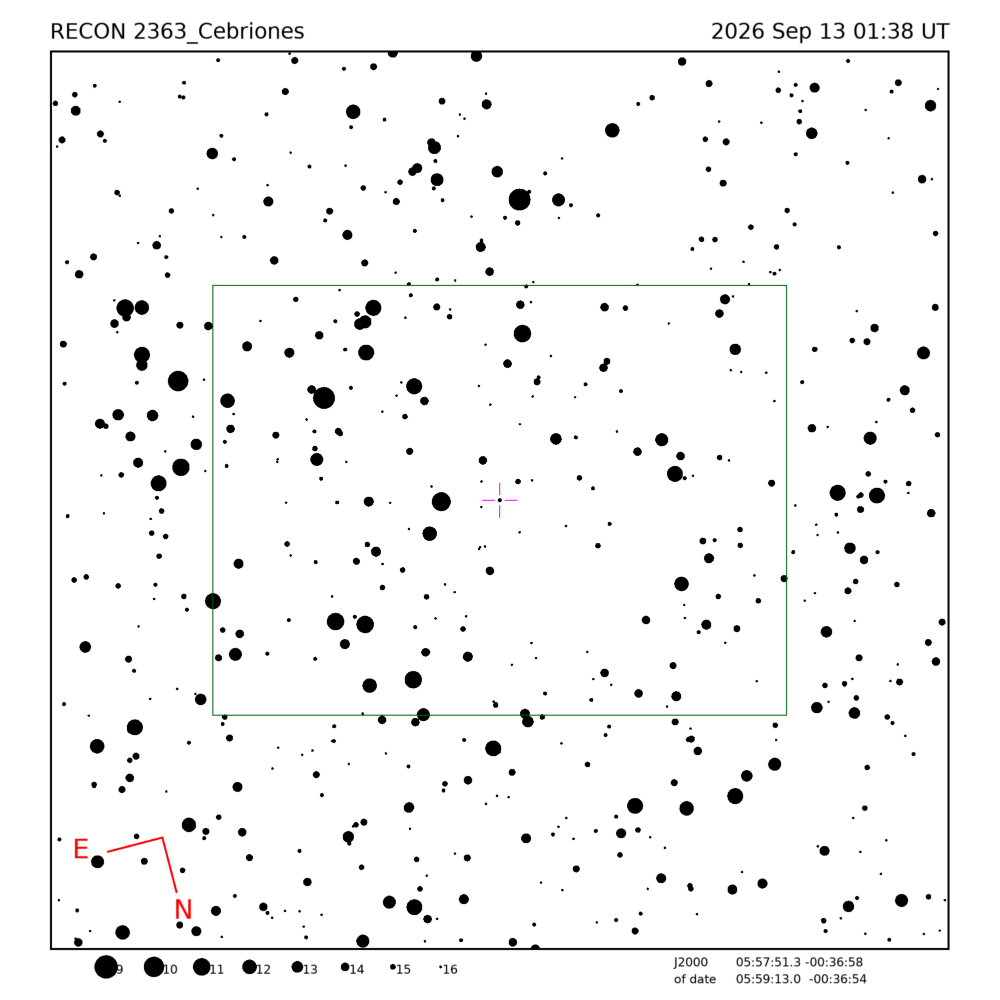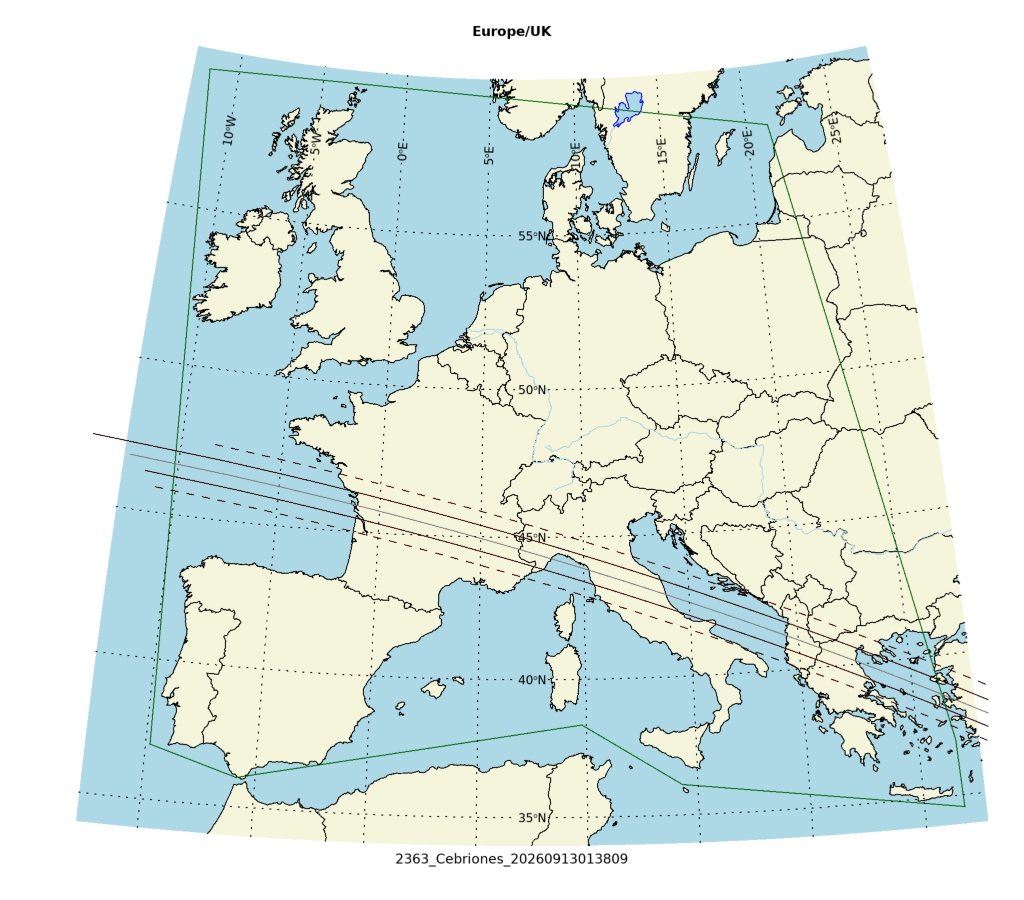
Occultation event with (2363) Cebriones, event index number 4228
Regions able to see the event: Europe
Geocentric closest approach at 2026/09/13 01:38:09 UTC
J2000 position of star is 05:57:51.3 -00:36:58
Equinox of date position of star is 05:59:13.0 -00:36:54
Star is 102 degrees from the moon. Moon is 4% illuminated.
Stellar brightness G=16.3, apparent brightess of occulting body is G=14.9
Use an exposure time of 1.05 seconds with the standard RECON-QHY system.
SNR of 3.2 per integration for unocculted signal
Expected flux drop is 21% with SNR of 0.7 for the occulted depth (per occulted point)
Apparent velocity is 22.5 km/sec on the sky relative to the star, or, 20.3 arcsec/hr.
Position angle of asteroid motion is 133.6 degrees
The recommended exposure time corresponds to 23.6 km per image.
The 1-sigma error in the time of the event is 1.3 seconds.
The 1-sigma cross-track error in the shadow position is 17.3 km.
The sky-plane scale is 3981.9 km/arcsec.
Diameter estimates:
93.8 km assuming a 5% albedo, maximum of 4.2 sec for a central chord
38.3 km assuming a 30% albedo, maximum of 1.7 sec for a central chord
Cross-track diameter of 96.0 km used for deployment plan.
Star training set for 2363_Cebriones, (2026/09/13 01:38UT) Object RA Dec mag sep mel Betelgeuse 05:56:37.1 +07:24:35 0.4 8.05 104 34Del Ori 05:33:22.3 -00:16:53 2.2 6.47 108 60 Ori 06:00:12.0 +00:33:12 5.2 1.19 102 PPM 176083 05:59:33.2 -00:59:36 7.8 0.39 102 PPM 176077 05:58:14.7 -00:22:50 9.4 0.34 102 PPM 176079 05:58:47.4 -00:55:33 10.1 0.33 102 2363_Cebriones 05:59:13.0 -00:36:54 14.9 102 Positions are for equinox of date


Star training set for 2363_Cebriones, (2026/09/13 01:38UT) Object RA Dec mag sep mel Betelgeuse 05:55:10.3 +07:24:26 0.4 8.05 104 34Del Ori 05:32:00.4 -00:17:57 2.2 6.47 108 60 Ori 05:58:49.6 +00:33:11 5.2 1.19 102 PPM 176083 05:58:11.7 -00:59:39 7.8 0.39 102 PPM 176077 05:56:52.8 -00:22:56 9.4 0.34 102 PPM 176079 05:57:25.9 -00:55:37 10.1 0.33 102 2363_Cebriones 05:57:51.3 -00:36:58 14.9 102 Positions are for J2000